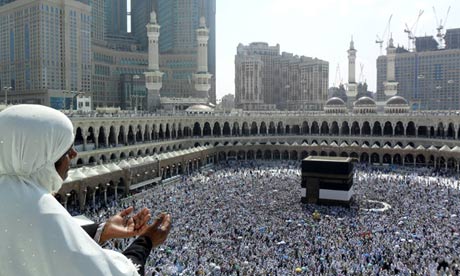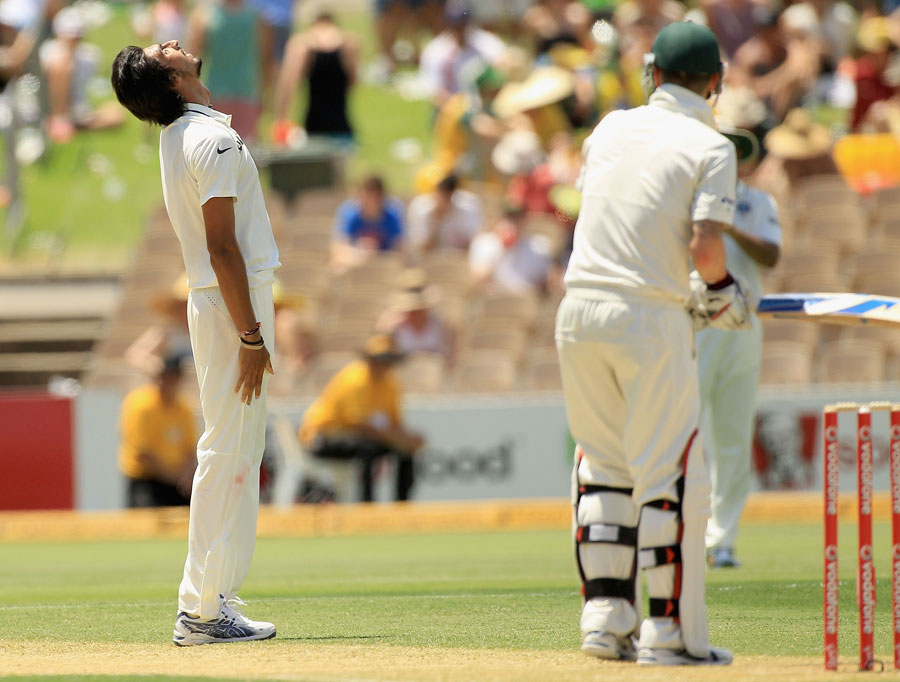Minhaz Merchant in Times of India
Which government – UPA or NDA – has been better for India’s economic and social indicators? Dismiss the rhetoric and stick to the facts. In this analysis, I’ve chosen 10 key parameters. They cover both economic and social criteria.
1.GDP growth: Average GDP growth in 1998-2004 (NDA) was 6% a year. Average annual GDP growth in 2004-13 (UPA), up to June 30, 2013, was 7.9%.
Caveat 1: The Vajpayee-led NDA battled US-led economic sanctions following the Pokhran-II nuclear test in May 1998. It faced a short but expensive Kargil war in 1999 and the dotcom bust in 2000. When it took office, it had the lag effect of the East Asian financial crisis of 1997-98 to contend with.
Caveat 2: The UPA government, in contrast, benefitted from the economic momentum of the high (8.1%) GDP growth rate of 2003-04 – the NDA government’s final year – and rode that wave. The global liquidity bubble in 2004-08 bouyed foreign mflows, helping UPA-I achieve a high GDP growth rate in its first term. The Lehman Brothers collapse in September 2008 did hurt the Indian economy but the ensuing US Federal Reserve asset buying programme attracted a steady flow of near-zero interest dollars into India from 2009.
Despite these caveats, the UPA government’s average annual GDP growth rate of 7.9% in 2004-13 clearly scores over the NDA government’s average annual growth rate of 6% (though high inflation boosted the former significantly). First strike to UPA.
2. Current Account Deficit:
2004: (+) $7.36 billion (surplus).
2013: (-) $80 billion.
The winner here is clearly NDA. It ran a current account surplus in 2002, 2003 and 2004. Under UPA this dipped into deficit from 2006 and has spun downwards since.
3. Trade deficit:
2004: (-) $13.16 billion.
2013: (-) $180 billion.
Again, advantage NDA.
4. Fiscal deficit:
2004: 4.7% of GDP.
2013: 4.8% of GDP.
Not much to choose between the two.
Caveat: This extract from the Asian Development Bank Institute (ADBI) report, published in 2010, explains why and when the UPA government’s fiscal defict began to spiral out of control.
“The central budget in 2008–2009, announced in February 2008, seemed to continue the progress towards FRBM targets by showing a low fiscal deficit of 2.5% of GDP. However, the 2008–2009 budget quite clearly made inadequate allowances for rural schemes like the farm loan waiver and the expansion of social security schemes under the National Rural Employment Guarantee Act (NREGA), the Sixth Pay Commission award and subsidies for food, fertilizer, and petroleum.”
“These together pushed up the fiscal deficit sharply to higher levels. There were also off-budget items like the issue of oil and fertilizer bonds, which should be added to give a true picture of fiscal deficit in 2008–2009. The fiscal deficit shot up to 8.9% of GDP (10.7% including off-budget bonds) against 5.0% in 2007–2008 and the primary surplus turned into a deficit of 3.5% of GDP.
“The huge increase in public expenditure in 2008–2009 of 31.2% that followed a 27.4% increase in 2007–2008 was driven by the electoral cycle with parliamentary elections scheduled within a year of the announcement of the budget.”
The recent announcement of the Seventh Pay Commission comes again, not unexpectedly, at the end of an electoral cycle.
5. Inflation:
1998-2004: 5%.
2004-2013: 9% (Both figures are averaged out over their respective tenures).
Advantage again to NDA. Inflation under NDA was on average half that under UPA, leading to the RBI’s controversial tight money policy, high interest rates and rising EMIs.
6. External Debt:
March 2004: $111.6 billion.
March 2013: $390 billion.
The UPA suffers badly in this comparision, a result of lack of confidence in India’s economy and currency following retrospective tax legislation and other regressive policies, especially during UPA-2.
7. Jobs:
1999-2004: 60 million new jobs created.
2004-11: 14.6 million jobs created.
Clearly, the UPA’s big failure has been jobless growth – a bad electoral omen.
8. Rupee:
1998-2004: Variation: Rs. 39 to 49 per $.
2004-13: Variation: Rs. 39 to 68 per $.
(Rupee rose from 40-plus to 39 between October 2007 and April 2008.)
The NDA government’s economic and fiscal policies, despite the various crises of 1998-2000 pointed out earlier, evoked more global confidence, leading to a relatively stable rupee (Rs. 10 variation) compared to the Rs. 29 variation during UPA’s tenure.
9. HDI:
2004: India was ranked 123rd globally on the human development index (HDI) in 2004, with a score of 0.453.
2013: India has slipped 13 places to 136th globally on the HDI in 2013 with a score of 0.554.
10. Subsidies:
2004: Rs. 44,327 crore.
2013: Rs. 2,31,584 crore.
Here again, profligate welfarism, as the ADBI report quoted earlier shows, has led to a rising subsidy bill. Worse, a significant amount is siphoned off by a corrupt nexus of politicians, officials and middlemen.
Conclusion: UPA scores above NDA on one of the 10 parameters (GDP growth), is level on one other parameter (fiscal deficit) while NDA does better than UPA on the remaining eight parameters.
The next time Finance Minister P. Chidambaram wishes to stage an encounter with facts, he would do well to be aware of those facts.
Sources: Economic Survey of India, UNDP, IMF, Planning Commission of India.
---------------------
Gujarat vs Bihar: settling the development debate
A rational analysis of the “Gujarat and Bihar models” of development must not mix apples with oranges. Critics put India’s 35 states and union territories – big and tiny – in the same empirical basket.
But comparing, for example, Goa’s indices with Uttar Pradesh’s is misleading on account of size, population and demographics.
A more logical way to address the Gujarat vs. Bihar development model debate is to compare the indices of India’s 10 largest states (by population) and rank them accordingly.
All data is from the Planning Commission of India except population data which is from the 2011 census, education data which is collated from published sources, and city GDP data which is drawn from the International Monetary Fund (IMF).
In this study, I have chosen the following indices:
- Per capita income;
- Human Development Index (HDI);
- Poverty levels;
- Education.
Taken together, ranking India’s 10 largest states by population across these four parameters will give us a good idea of where each state stands on income, malnutrition and social infrastructure.
Start with the 10 largest states in descending order of population:
State Population (2011 census)
- Uttar Pradesh: 199 million
- Maharashtra: 112 million
- Bihar: 104 million
- West Bengal: 91 million
- Andhra Pradesh: 85 million
- Madhya Pradesh: 73 million
- Tamil Nadu: 72 million
- Rajasthan: 69 million
- Karnataka: 61 million
- Gujarat: 60 million
Now rank these 10 states by per capita income – a critical indicator of prosperity.
State Per capita income (FY 2012)
- Maharashtra: Rs. 1,01,314
- Gujarat: Rs. 89,668
- Tamil Nadu: Rs. 84,496
- Karnataka: Rs. 69,055
- Andhra Pradesh: Rs. 68,970
- West Bengal: Rs. 55,222
- Rajasthan: Rs. 53,735
- Madhya Pradesh: Rs. 37,994
- Uttar Pradesh: Rs. 30,051
- Bihar: Rs. 22,691
All-India: Rs. 61,564
Maharashtra ranks no. 1, Gujarat no. 2 and Tamil Nadu no. 3. But Maharashtra has an unfair advantage because Mumbai, India’s wealthiest city, increases its average per capita income significantly. Let’s compute the precise impact.
The GDPs of India’s richest cities are:
City GDPs (PPP)
- Mumbai: $209 billion
- Delhi: $167 billion
- Kolkata: $150 billion
- Bangalore: $84 billion
- Hyderabad: $74 billion
- Chennai: $66 billion
- Ahmedabad: $52 billion
- Pune: $47 billion
(PPP: Purchasing Power Parity)
If we exclude Mumbai’s $209 billion GDP from Maharashtra’s GDP (adjusting PPP GDP for exchange rate nominal GDP to align with Planning Commission figures) but keep Pune (whose $47-billion GDP is not dissimilar to the GDP of the capitals of other key states), Maharashtra’s per capita income falls from Rs. 1,01,314 to around Rs. 78,000.
So without Mumbai (but including Pune), Maharashtra would slip to no. 3 in our per capita income chart. Gujarat would move up to no. 1, Tamil Nadu to no. 2. Bihar, with per capita income of Rs. 22,691, would stay at no. 10.
As Rahul Sachitanand wrote in The Economic Times on August 1, 2013: “In the five years before Modi took charge, (Gujarat's) average growth in GDP was 2.8%. Under him, between 2002-03 and 2011-12, it was 10.3%. Only three small states – Sikkim, Uttarakhand and Delhi – have grown faster. Gujarat is ahead of the national average (7.9%), as well as the two states it is pitted against in today’s discourse, Bihar (8.4%) and Madhya Pradesh (7.1%). It has leapfrogged Maharashtra to lead in factory output, grown well in agriculture, and been a leader in electricity reform and the spread of irrigation.”
Sachitanand goes on to point out, rightly, that Gujarat "has struggled to engineer similar breakouts in its social indicators – women, health, education, poverty, wages."
Turn now, therefore, to our second criterion – Human Development Index (HDI).
State HDI (2011)
- Maharashtra: .572
- Tamil Nadu: .570
- Gujarat: .527
- Karnataka: .519
- West Bengal: .492
- Andhra Pradesh: .473
- Rajasthan: .434
- Uttar Pradesh: .380
- Madhya Pradesh: .375
- Bihar: .367
All-India HDI: .467
HDI is a composite of life expectancy, education and income indices. It was created in 1990 by Amartya Sen and Pakistani economist Mahbub ul Haq. Life expectancy is correlated to social indicators such as healthcare, malnutrition, infant mortality, etc.
Maharashtra emerges as no. 1, Tamil Nadu no. 2 and Gujarat no. 3. HDI is also correlated (though not linearly) to prosperity. Not surprisingly, therefore, these three states top the per capita income charts as well. Clearly, however, despite being ranked third among India’s 10 largest states on HDI, Gujarat needs to improve further. Bihar though is ranked last again and needs to do a lot more.
* * *
Gujarat also needs to increase its expenditure on education. It currently spends only 13.9% of total expenditure on education and is ranked a low eighth among India’s 10 largest states. In comparison, Bihar spends a higher proportion (18%) of its overall expenditure on education. Of course, Gujarat’s outlays are larger in absolute terms because of its larger overall budget but it hasn’t paid enough attention to education – and that could hurt growth in the long term unless corrected quickly.
Education expense as a ratio of total expenditure
- Maharashtra: 21.0%
- Rajasthan: 19.1%
- West Bengal: 18.3%
- Bihar: 18.0%
- Uttar Pradesh: 15.9%
- Karnataka: 15.6%
- Tamil Nadu: 14.7%
- Gujarat: 13.9%
- Madhya Pradesh: 13.1%
- Andhra Pradesh: 11.5%
Gujarat has also been criticised for neglecting healthcare and malnutrition. While HDI, where Gujarat is ranked no. 3, captures some social indicators like infant mortality, healthcare and malnutrition, poverty levels are another important pointer to the overall quality of social infrastructure.
Here Gujarat, while better than the all-India average, fares poorly in comparison with a state like Rajasthan. Bihar though continues to suffer twice the level of poverty of Gujarat.
Poverty ratio (2011-12)
- Bihar: 33.5%
- Madhya Pradesh: 31.7%
- Uttar Pradesh: 29.4%
- Gujarat: 16.6%%
- Rajasthan: 14.7%
All-India: 21.9%
* * *
The overall verdict:
- Gujarat has the highest per capita income among India’s 10 largest states (when Mumbai is excluded from Maharashtra).
- It has the third best HDI score among these large states. This is contrary to the popular belief that Gujarat favours manufacturing, industry and infrastructure at the cost of the social sector.
- Bihar does abysmally on all criteria – per capita income, HDI, poverty levels – except education where it spends more as a ratio of its small overall expenditure than Gujarat.
Going forward, Gujarat needs to focus on education and healthcare and further improve its HDI score. And it must focus on more equable income distribution to bring poverty levels down even faster from 16.6%, even though this is significantly better than the all-India level of 21.9% and half Bihar’s poverty level of 33.5%.
Gujarat’s annual agricultural growth over the past decade has averaged more than 10% – triple India’s average – and it still has the country’s highest manufacturing/industry ratio-to-GDP.
Bihar’s task is tougher. It needs to improve on all fronts. Its per capita income is one-fourth Gujarat’s and its poverty levels twice Gujarat’s. Though its annual GDP growth rate is roughly similar to Gujarat's, its low base will make it hard for it to bridge the gap for decades. It is ranked last on HDI. Its only silver lining is education – but here too, as the Chapra midday meal tragedy demonstrated, much more needs to be done to improve school infrastructure despite eight years of Nitish Kumar’s chief ministership.
In conclusion, the Gujarat vs Bihar development model debate is a sterile one. Both states should be aiming at meeting absolute standards on economic and social criteria, not engaging in political one-upmanship.



